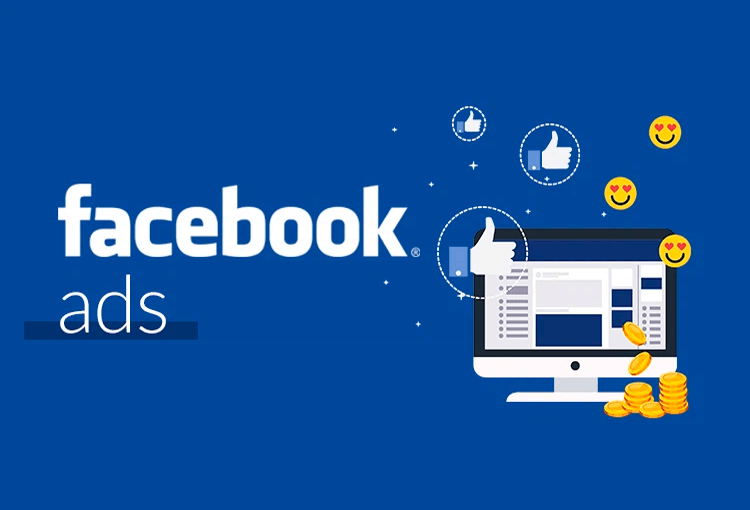Introduction:
Facebook advertising is the cornerstone of digital marketing since it offers businesses a powerful means of connecting and interacting with a wide audience. With over 2.8 billion active users every month, Facebook offers unmatched opportunities to boost brand recognition and attract prospective clients. Nevertheless, the true measure of success is generating converts rather than just attracting notice. Making ads that captivate and inspire the people you want to target is essential. A well-thought-out Facebook advertisement can raise revenue, improve return on investment, and improve click-through rates—all of which can dramatically improve the amount you spend on advertising. This post covers the process for developing FB advertisements that work.
Section 1: Understanding Your Target Audience
Knowing who your target demographic is will help you create local Facebook ads that work. Conduct research and create a profile of those you want to reach to find out about their statistics, hobbies, and habits. Facebook’s go after Insights tool is essential for this because it offers detailed information that helps you target your target. Create carry out buyer personas—imagined depictions of your ideal clientele—after collecting this information. By using these personas, you can more effectively tailor your marketing content to your target audience’s demands, wants, and issues. Customised ads are more likely to be engaged with and result in a conversion from your target market’s likes and motives.
Section 2: Crafting Attention-Grabbing Headlines
Developing attention-grabbing headlines is crucial for the efficacy of your Facebook ads. A compelling title piques readers’ curiosity and compels them to keep reading. Effective headlines are short and straightforward and address the issues or emotions of the person reading them. Creating anxiety, highlighting promotions, and employing action words are a few methods of writing headings that grab readers’ attention. For example, headlines like “Unlock Exclusive Discounts Today!” or “Transform Your Home with These Simple Upgrades” encourage readers to click on them. By focusing on the points that are important most to those who are reading your content, you can create headings that not only catch their interest but also inspire them to make a purchase.
Section 3: Designing Eye-Catching Visuals
Appealing images are essential to the success of Facebook ads since they are often the first thing viewers see. Captivating pictures and videos have the ability to greatly boost interaction and promote conversions. Best practices include using bright, high-resolution images, ensuring the graphics complement your brand, and using little to no text. Videos must be quick, have a clear message, and have attractive thumbnails. Even without a lot of design experience, one may still produce visually striking content with the use of apps like Canva, Adobe Spark loaded on your computer, and Visme or V. You can make sure that your advertisements stand out in users’ feeds, attracting attention and promoting engagement, by creating exceptional visual content.
Section 4: Writing Persuasive Ad Copy
To turn interest into action, successful promotional text must be created. Clarity and relevance to the demands and tastes of your target audience are all vital elements. Employing emotions, emphasising benefits over characteristics, and directly targeting pain spots are methods of producing interaction that are appealing. Furthermore, it is essential to include a compelling call-to-action (CTA) that directs the viewer on what’s to come, such as “Shop Now,” “Learn More,” or “Get Started.” A powerful call to action (CTA) makes the advertisement appealing and effective in generating conversions by creating a sense of urgency and demanding immediate action.
Section 5: Leveraging Facebook Ad Formats
To turn interest into behaviour, effective advertising text must be created. Clarity, conciseness, and relevance to the needs and tastes of your target audience are essential elements. Employing emotions, emphasising benefits over features, and directly targeting pain spots are methods of creating interaction that are captivating. In addition, it is essential to include a compelling call-to-action (CTA) that directs the reader on what’s to come, such as “Shop Now,” “Learn More,” or “Get Started.” A strong call to action (CTA) make the advertisement appealing and effective for driving conversions by creating a feeling of urgency and encouraging action right away.
Section 6: A/B Testing Your Ads
A/B testing is required to maximise the performance of Facebook advertising since it allows you to test several ad versions and determine which attributes are more effective with your target demographics. To build up an A/B test, create two or more copies of your Facebook commercial and change only one component at a time, such as the headline, picture, or call to action. Commercials should run simultaneously to give an equitable comparison. Metrics like sales, click-through rates, and participation must be assessed in order to analyse the test outcomes. Use these insights to improve your advertisements over time to maximise the return on your investment and increase their efficacy.
Section 7: Monitoring and Analyzing Ad Performance
You must analyse and track the performance of ads if you want your Facebook commercials to be effective. The main metrics to keep an eye on are click-through rates (CTR), conversion rates, involvement, and return on ad spend (ROAS). With the aid of the comprehensive evaluation capabilities provided by Facebook Advertising Manager, you may dig into these indicators to better understand the efficacy of your advertising campaigns. By continually evaluating this data, you can identify trends and possibilities for growth. Use these data in order optimise and fine-tune your ads, adding changes to the news, targeting, or images, for instance, to boost the effectiveness while offering superior outcomes over time.
Section 8: Case Studies of Successful Facebook Ads
Analysing case studies of profitable Facebook ads provides insightful information about successful tactics. Targeted advertising has helped companies like Nike and Glossier reach high conversion rates. The ads for Nike strike an emotional chord with their viewers by emphasising inspirational narrative and excellent graphics. The utilisation of material created by users and simple design in Glossier advertisements fosters genuineness and confidence. The ads in question were successful since they had a strong grasp of their target market, a recognisable brand, a message, and powerful calls to action. Defining your target market, utilising engaging imagery, and creating engaging messages that align with your audience’s values and interests are some of the most important lessons that have been learned.
Conclusion:
In summary, producing engaging Facebook ads involves understanding your target market, coming up with captivating headlines, creating visually arresting content, creating persuasive ad text, and using performance evaluation and A/B testing. You can boost the impact of your advertisements by encouraging more conversions and interaction by putting these strategies into practice. Keep in mind that ongoing testing and optimisation are necessary for long-term success. Make sure your advertising materials are still relevant and fascinating by regularly reviewing and improving them in light of data-driven conclusions. By adhering to these instructions, you may produce advertisements for Facebook that not only grab notice but also close deals, thereby improving the overall efficacy of the marketing effort.


